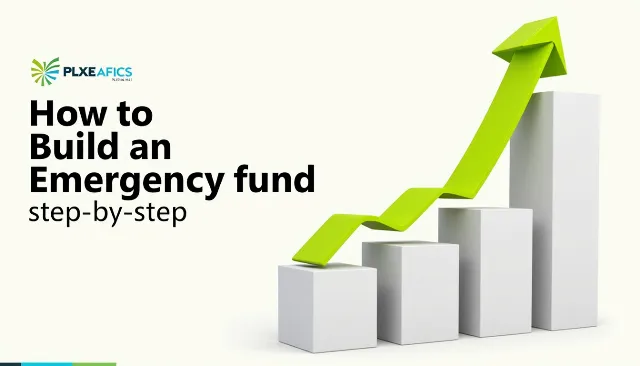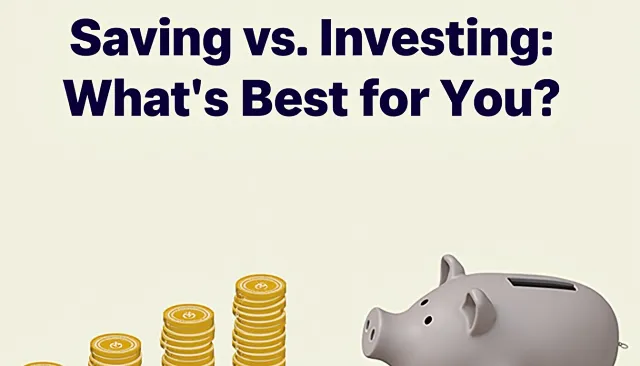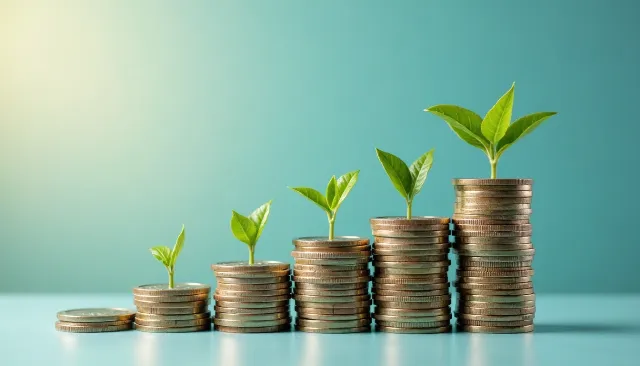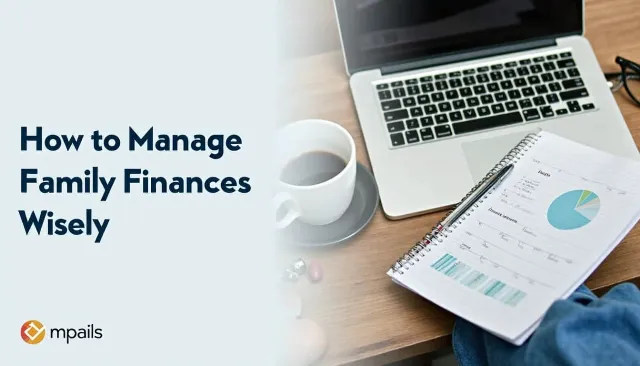1. Understanding the Importance of an Emergency Fund
An emergency fund is money set aside for unexpected situations. Life is full of surprises. Sometimes your car breaks down, your phone stops working, or you need a sudden doctor visit. If you don’t have savings, these events can create stress. An emergency fund acts like a safety net, helping you stay calm and prepared.
Having this fund is important because it prevents you from borrowing money at high interest rates. Without it, you may rely on credit cards or loans, which can make your financial problems bigger. Even a small fund can cover basic needs and give you peace of mind.

Experts recommend keeping at least three to six months’ worth of expenses in your emergency fund. This means if your monthly spending is $500, you should try to save $1,500–$3,000. Building it slowly is okay. The goal is to have money ready when life throws surprises your way.
2. Determining Your Financial Safety Net Goal
Before you start saving, you need to know how much money you want in your emergency fund. This is called your savings goal. Think about your monthly bills, groceries, rent, and small extras. Add them up to see how much you spend each month. This helps you know how big your fund should be.
Next, decide how many months you want your fund to cover. Most experts suggest three to six months. If your job is very stable, three months may be enough. If your income changes or you have kids, six months is safer. This will be your financial safety net.
Setting a clear goal gives you direction. It makes saving easier because you know what you are working toward. You can start small, maybe $50 or $100 per month, and gradually reach your target. The key is consistency and patience.
3. Analyzing Your Monthly Expenses
To save money, you need to understand where it goes. Start by tracking your expenses for one month. Write down everything you spend money on, from bills to snacks. This helps you see what is necessary and what can be reduced.
Look for patterns. Are you spending too much on dining out, shopping, or subscriptions you don’t use? Cutting small amounts here and there can free up money for your emergency fund. Even saving $10 a week can add up over time.
Analyzing expenses also shows how much you really need for three to six months. This becomes your target for the emergency fund. Understanding your spending helps you make smarter choices and build a fund faster without feeling stressed.
4. Setting a Realistic Savings Target
After knowing your expenses and safety net goal, it’s time to set a savings target. This is how much you will put aside each month. Make sure it is realistic. Don’t aim to save all your income at once, or it may be hard to stick with it.
Start with a small amount that won’t affect your daily life. Even $20 or $50 a month is a good start. Over time, increase the amount as your budget allows. The important thing is to save consistently, not to save a lot at once.
Having a clear target keeps you motivated. You can see progress as your fund grows. Treat your savings like a regular expense, just like paying rent or electricity. This way, building an emergency fund becomes easier, and you feel proud of your achievements.
5. Evaluating Your Current Financial Situation
Before you start saving, it’s important to understand your current financial situation. Look at how much money you earn and how much you spend each month. Include your income from work, side jobs, or other sources. Knowing your money flow helps you plan better.
Next, check if you have any debts or loans. High-interest debts can slow down your savings progress. It is a good idea to make a list of your debts and see how much you owe. This helps you decide how much money you can put aside for emergencies each month.
Understanding your finances gives you a clear picture of what is possible. It helps you make smart decisions about saving, spending, and paying off debts. When you know where you stand, you can set realistic goals and build your emergency fund step by step.
6. Choosing the Right Type of Savings Account
Once you know your savings target, the next step is picking a safe place to keep your money. A savings account is a great option because it is easy to access and your money stays safe. Look for accounts with no fees and good interest rates.
Some people choose separate accounts just for emergencies. This way, you won’t spend the money by mistake. You can also use digital banks or mobile wallets with instant access, but make sure they are secure and reliable.
The right account helps your emergency fund grow slowly with interest. It also gives peace of mind knowing your money is safe. Keep it separate from everyday spending accounts to make sure it is only used for true emergencies.
7. Automating Your Savings for Consistency
One of the easiest ways to save is by automating your deposits. Set up a system where a fixed amount of money is transferred to your emergency fund automatically each month. This makes saving consistent without extra effort.
Automation removes the temptation to spend the money elsewhere. Even small amounts like $20 or $50 a month can add up over time. As your income grows, you can increase the automated transfers to reach your goal faster.
By automating your savings, you make building your emergency fund simple and stress-free. You don’t have to remember to save each month. Your money works for you while you focus on daily life, giving you financial security over time.
8. Cutting Unnecessary Expenses to Free Up Cash
Saving money becomes easier when you spend less on things you don’t really need. Start by reviewing your monthly expenses. Look for small things you can reduce, like eating out, subscriptions, or impulse shopping.
Even small changes can make a difference. Skipping a coffee a few times a week or choosing a cheaper phone plan can free up money for your emergency fund. It’s important to stay consistent with these changes.
Cutting unnecessary expenses teaches you better money habits. It helps you save faster and still enjoy life. Every small saving contributes to your emergency fund, bringing you closer to financial safety and peace of mind.
9. Increasing Your Income to Boost Savings
If saving feels slow, one way to grow your emergency fund faster is by increasing your income. You can take up a part-time job, freelance work, or small side projects. Even a few extra dollars each week can make a big difference.
Another option is to sell items you no longer need. Old clothes, gadgets, or toys can be sold online or in a garage sale. The money earned can go straight into your emergency fund. Small efforts like this add up over time.
Increasing income not only helps you save more but also teaches you creative ways to earn. Combining extra income with smart spending ensures your emergency fund grows steadily. Over time, this makes you more confident and financially secure.
10. Prioritizing Your Emergency Fund Over Other Goals
Building an emergency fund should be a top priority before spending on non-essential goals. Things like vacations, gadgets, or luxury items are fun, but emergencies come first. Saving first ensures you are prepared for unexpected events.
You don’t have to stop all other spending; just focus a portion of your income on your emergency fund. For example, you can save 20% of your income for emergencies and use the rest for daily life and fun activities.
Prioritizing teaches discipline and financial responsibility. It ensures you are ready for life’s surprises without stress. Once your emergency fund is stable, you can confidently plan for other goals without worry.
11. Handling Small and Large Emergencies Differently
Not all emergencies are the same. Small emergencies, like replacing a broken phone charger, can be handled with a few dollars from your fund. Large emergencies, like medical bills, need more money saved and careful planning.
It’s helpful to split your fund mentally into sections: a small part for minor issues and a larger part for bigger emergencies. This helps you use money wisely and avoid depleting your fund too quickly.
Knowing how to handle emergencies reduces panic and stress. Your fund acts as a safety net, giving you control over unexpected problems. This makes your life smoother and gives you peace of mind.
12. Building a Fund While Paying Off Debt
Paying off debt while saving can feel hard, but it is possible. First, create a plan for both saving and debt repayment. Even small monthly contributions to your emergency fund matter, while you continue to pay off debts gradually.
Focus on high-interest debts first, like credit cards. This reduces the amount you owe faster and frees up more money for savings. At the same time, putting a small amount into your emergency fund prevents future financial stress.
Balancing debt repayment and saving teaches discipline. Over time, you will have both less debt and a growing emergency fund. This dual approach makes your finances stronger and more secure.
13. Involving Family Members in Emergency Planning
Building an emergency fund is easier when your family is involved. Talk with your parents, spouse, or siblings about why saving for emergencies is important. Sharing goals makes everyone aware and responsible.
Family involvement helps in creating a realistic budget. Each member can contribute ideas to reduce expenses or increase savings. Even small contributions from everyone can grow the fund faster.
When everyone works together, emergencies feel less stressful. Your family knows there is money set aside for unexpected situations. Teamwork builds good financial habits and strengthens trust within the family.
14. Using Windfalls and Bonuses to Grow Your Fund
Unexpected money, like bonuses, gifts, or tax refunds, can boost your emergency fund quickly. Instead of spending it all, set aside a portion for your savings. This helps your fund grow faster without affecting your regular budget.
Even small windfalls can make a difference over time. For example, if you receive a $200 bonus, putting it entirely into your emergency fund adds up much faster than small monthly savings alone.
Using windfalls wisely teaches discipline and patience. It ensures that extra money strengthens your financial safety net. This habit also prepares you for future surprises with confidence and security.
15. Tracking Your Progress and Adjusting Goals
Tracking your emergency fund progress is important. Keep a notebook or use a mobile app to record your savings every month. Seeing the fund grow motivates you to keep saving.
Sometimes your financial needs change, so adjusting your goals is normal. If your expenses increase, you may need to save more. If you get a stable income, you can increase your monthly contribution.
Regular tracking makes saving less stressful. It shows you how far you’ve come and helps you plan for the future. Adjusting your goals ensures your emergency fund always meets your needs.
16. Protecting Your Emergency Fund from Temptation
It’s easy to spend money from your emergency fund if it’s too accessible. Keep it in a separate account to avoid using it for non-emergencies. This helps the fund grow steadily.
Some people use accounts that are slightly harder to access, like high-yield savings accounts or digital wallets with transfer limits. This discourages impulse withdrawals while still keeping the money safe.
Protecting your fund teaches discipline. Knowing the money is only for real emergencies gives peace of mind. Over time, your fund grows, making you financially strong and prepared for unexpected challenges.
17. Knowing When Your Fund is Sufficient
It’s important to recognize when your emergency fund is enough. Generally, having three to six months of living expenses is recommended. Once you reach this, you can feel confident that you are financially protected.
Assess your lifestyle and needs. If your job is stable and expenses are low, three months may be enough. If your income is irregular or you have dependents, aim for six months or more. This ensures you can handle unexpected events without stress.
Knowing your fund is sufficient brings peace of mind. You can focus on other financial goals like investing or education. Your emergency fund acts as a cushion, giving you confidence in all situations.
18. Replenishing Your Fund After an Emergency
Sometimes emergencies happen, and you need to use your fund. Afterward, it’s important to replenish it as soon as possible. This restores your safety net for future surprises.
Set a plan to refill the fund gradually. Even small monthly contributions help. Treat replenishing as a priority, just like paying bills, until your fund returns to the target amount.
Rebuilding your fund teaches resilience and financial responsibility. Emergencies are temporary, but a full fund gives long-term protection. Consistent replenishing ensures you are always ready for life’s unexpected events.
19. Learning from Past Financial Crises
Look back at past emergencies and mistakes to improve your savings habits. Think about what went wrong and what could have been done differently. Learning from past experiences helps prevent future stress.
Analyze your spending and saving patterns during those times. Did you rely on credit cards or loans? Did you have enough in your emergency fund? This reflection helps you plan better for the future.
Learning from past crises strengthens your financial skills. It encourages smarter choices and builds confidence in handling emergencies. Over time, you become better prepared and more secure.
20. Maintaining Your Fund for Long-Term Security
Building your emergency fund is not a one-time effort; it needs maintenance. Continue adding money periodically, even after reaching your target, to account for inflation and changing expenses.
Review your fund annually to ensure it still covers your needs. Adjust your monthly contributions if your expenses increase or income changes. Staying proactive keeps your fund reliable.
Maintaining your emergency fund ensures long-term security. It gives peace of mind, protects against unexpected costs, and builds a strong financial foundation for you and your family. Regular maintenance keeps you ready for anything.






